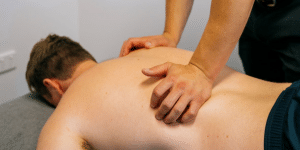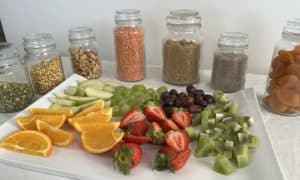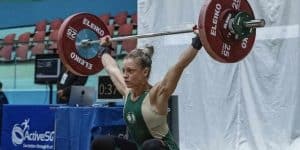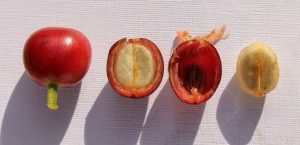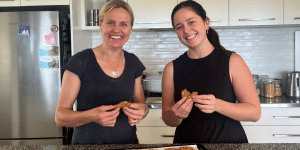What is aerobic fitness and how do I test it?
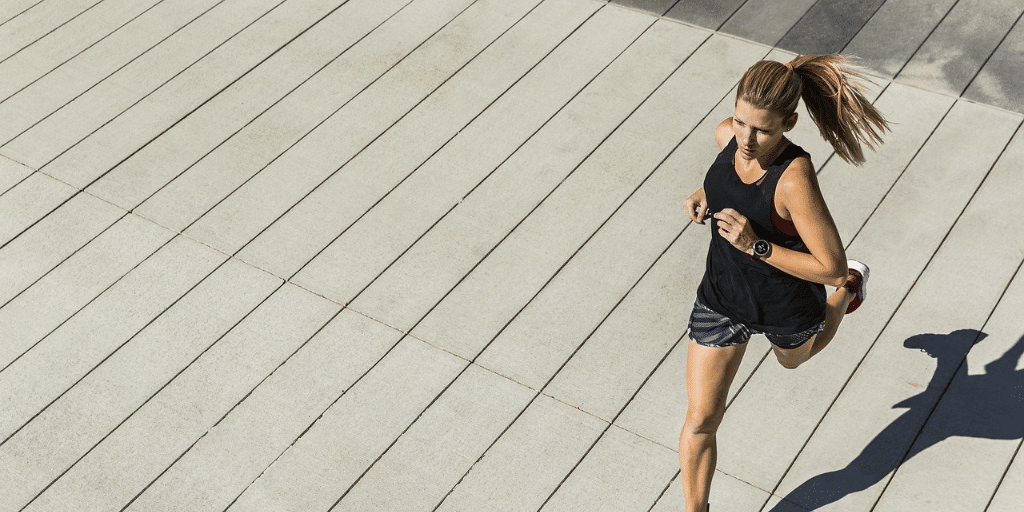
- What exactly is aerobic fitness?
- Why is it important?
- How much is enough?
- How fit am I?
What is aerobic fitness?
By definition, ‘aerobic’ means ‘with oxygen’. Aerobic fitness (interchangeable with ‘cardio fitness’) is a measure of your body’s ability to take oxygen from the atmosphere and use it generate energy in your muscle cells. There are two key processes involved;

With training, both processes get more efficient, the heart and lungs can deliver bigger volumes of oxygen, and the body produces more mitochondria (the part of the muscle cell where the chemical reaction takes place). As a consequence, you can generate more energy, and use your muscles to generate more force over time – you get fitter!
Why is aerobic fitness important?
Remember – in a fitter person, the whole system (heart, lungs, blood vessels and cells) work more efficiently. Think of your body like a car engine; an engine that runs efficiently and doesn’t need to work too hard to hold its speed uphill is far less likely to break down. Unlike a car breakdown, an issue with your body’s systems can’t always be fixed or replaced.
Poor fitness caused by physical inactivity is one of the major risk factors for:
- Cardiovascular disease, including high blood pressure, heart conditions, and stroke
- Type 2 diabetes
- Overweight and obesity
- Osteoporosis
- Some cancers, especially breast and colon cancer
Conversely, people who are regularly active have a lower incidence of all of these health issues.
How much is enough?
| Preschoolers, 3-5 years | Preschoolers should be active for at least 3 hours each day. This should include 1 hour of energetic play, like: • running – playing tips, ball games or races at the park • kicking, throwing and jumping – at the park or by creating fun obstacle courses at home • dancing • skipping. This should take place through the day, not all at once. Physical activity for preschoolers should be fun and encourage exploration and discovery. |
| Children and young people, 5-17 years | Children and young people should do at least 60 minutes each day of moderate to vigorous physical activity that makes the heart beat faster. More is better. It doesn’t have to be a full 60 minutes at once – several shorter sessions through the day work too. These activities don’t have to be organised and can include: • running, swimming, riding a bike or scooter • organised or informal sports • dance, gymnastics, rock-climbing – the sky is the limit! Children and young people should also do several hours of various light physical activities each day. |
| Adults 18-64 years | Adults: should be active on most, preferably all, days every week • Accumulate 150 to 300 minutes of moderate intensity physical activity or 75 to 150 minutes of vigorous-intensity physical activity, or an equivalent combination of both moderate and vigorous activities each week • Do muscle-strengthening activities on at least 2 days each week |
| older adults, aged 65+ | Older adults should; • Accumulate at least 30 minutes of moderate intensity physical activity on most, preferably all, days. • Complete muscle-strengthening activities on at least 2 days each week. |
How fit am I?
The simplest way to assess your cardiovascular fitness is by measuring your resting heart rate. Remember, ‘resting’ doesn’t mean you’ve just found a spare minute to sit down after rushing around all morning with a couple of coffees on board. A normal resting heart rate for adults ranges from 50 to 70 beats per minute. ‘Resting’ means completely relaxed.
Another way to assess your fitness is to measure your heart rate response to exercise.
Step T
Equipment:
- 30cm (12”) step or sturdy box
- Stopwatch
- Metronome (free apps available)
Method:
- Set metronome to 96 bmp
- Step up and down off the box for three minutes in time with the beat
- To maintain a steady pace it can help to say “up, up, down, down” with each beat
- At the end of the three minutes, rest for one minute and then check your heart rate
How’d you go? – The lower your heart rate the fitter you are.
3-minute Step Test (Men) – Heart Rate
| Age | 18-25 | 26-35 | 36-45 | 46-55 | 56-65 | 65+ |
| Excellent | <79 | <81 | <83 | <87 | <86 | <88 |
| Good | 79-89 | 81-89 | 83-96 | 87-97 | 86-97 | 88-96 |
| Above Average | 90-99 | 90-99 | 97-103 | 98-105 | 98-103 | 97-103 |
| Average | 100-105 | 100-107 | 104-112 | 106-116 | 104-112 | 104-113 |
| Below Average | 106-116 | 108-117 | 113-119 | 117-122 | 113-120 | 114-120 |
| Poor | 117-128 | 118-128 | 120-130 | 123-132 | 121-129 | 121-130 |
| Very Poor | >128 | >128 | >130 | >132 | >129 | >130 |
Source: Mackenzie, B. (2005). 101 Performance evaluation tests.
3-minute Step Test (Women) – Heart Rate
| Age | 18-25 | 26-35 | 36-45 | 46-55 | 56-65 | 65+ |
| Excellent | <85 | <88 | <90 | <94 | <95 | <90 |
| Good | 85-98 | 88-99 | 90-102 | 94-104 | 95-104 | 90-102 |
| Above Average | 99-108 | 100-111 | 103-110 | 105-115 | 105-112 | 103-115 |
| Average | 109-117 | 112-119 | 111-118 | 116-120 | 113-118 | 116-122 |
| Below Average | 118-126 | 120-126 | 119-128 | 121-129 | 119-128 | 123-128 |
| Poor | 127-140 | 127-138 | 129-140 | 130-135 | 129-139 | 129-134 |
| Very Poor | >140 | >138 | >140 | >135 | >139 | >134 |
Source: Mackenzie, B. (2005). 101 Performance evaluation tests.
For those who are a bit fitter there is the 12min run test
Equipment:
- Stop watch
- A running area with a clearly marked distance – running track, treadmill etc
Method:
- Perform a brief warm up, 10-15mins at a low-moderate intensity
- Run or walk as far as you can in a 12-minute period.
- Record the distance and use that to complete the equation below to calculate your VO2max
How’d you go? Using your distance, you can calculate how you went compared to others of your age and gender:
VO2max = (22.351 x distance in km’s) – 11.288
This link https://www.exrx.net/Calculators/MinuteRun will take you to an online calculator. Or have a look at the table below and compare your results:
| Females | ||||
| AGE | 20-29 | 30-39 | 40-49 | 50 |
| Excellent | 2700m + | 2500m + | 2300m+ | 2200m + |
| Above Average | 2200-2700m | 2000-2500m | 1900-2300m | 1700-2200m |
| Average | 1800-2199m | 1700-1999m | 1500-1899m | 1400-1699m |
| Below Average | 1500-1799m | 1400-1699m | 1200-1499m | 1100-1399m |
| Poor | 1500m> | 1400m> | 1200m> | 1100m> |
| Males | ||||
| AGE | 20-29 | 30-39 | 40-49 | 50 |
| Excellent | 2800m + | 2700m + | 2500m+ | 2400m + |
| Above Average | 2400-2800m | 2300-2700m | 2100-2500m | 2000-2400m |
| Average | 2200-2399m | 1900-2299m | 1700-2099m | 1600-1999m |
| Below Average | 1600-2199m | 1500-1999m | 1400-1699m | 1300-1599m |
| Poor | 1600m> | 1500m> | 1400m> | 1300m> |
*How to measure Heart Rate:

At the wrist: Place two fingers on the inside of the wrist, about 1cm from the joint, in line with the index finger. Once you find the pulse, count the number of beats for 15s and multiply by 4 to establish beats per minute (bpm).

At the neck: Gently place to fingers on the side of you neck, just below the jaw until you feel the pulse. Once you find the pulse, count the number of beats for 15s and multiply by 4.

Use electronics: It can be difficult to obtain a heart rate while moving so to get a more accurate measure you can use a heart rate monitor.
References
https://bmcpublichealth.biomedcentral.com/articles/10.1186/s12889-018-6059-4
Brown W J, Moorhead GE and Marshall AL (2005) Choose Health: Be Active: A physical activity guide for older Australians. Canberra: Commonwealth of Australia and the Repatriation Commission. From https://www.health.gov.au/sites/default/files/documents/2021/03/choose-health-be-active-a-physical-guide-for-older-australians.pdf

